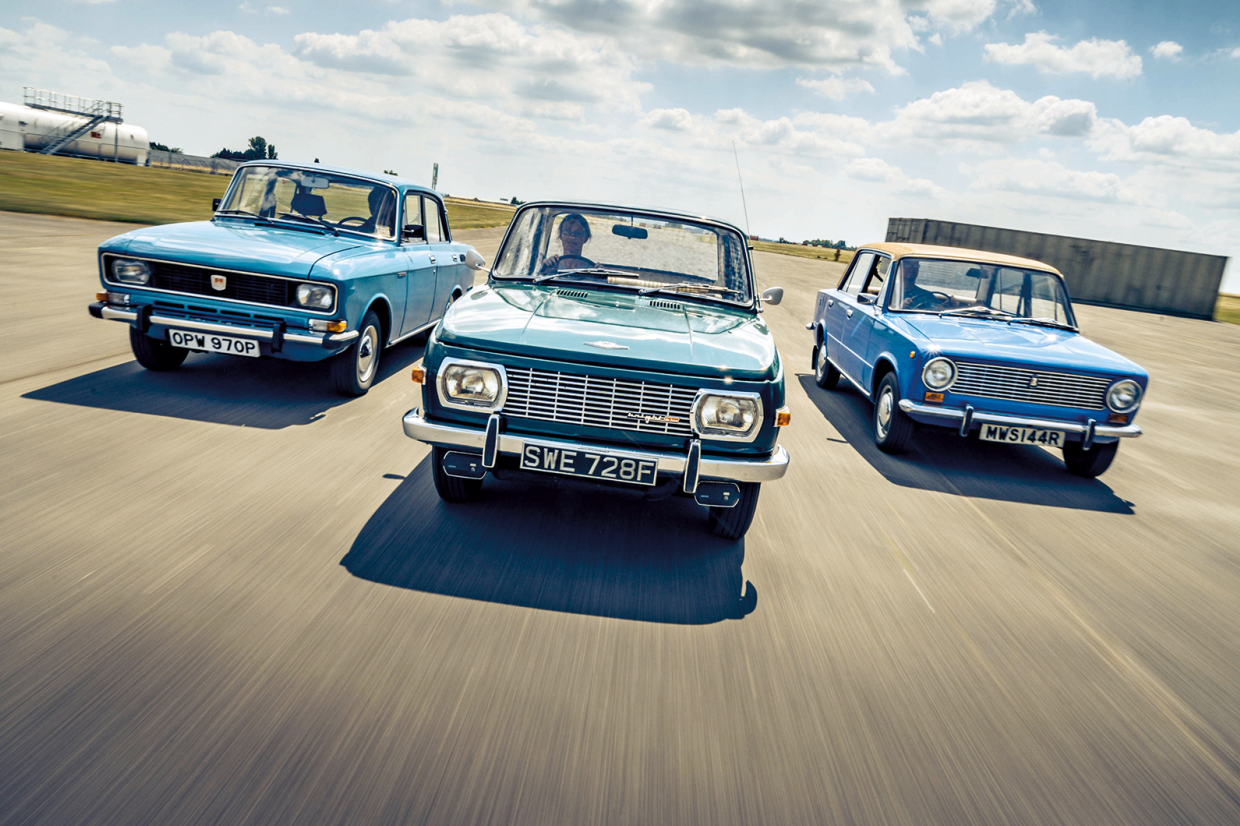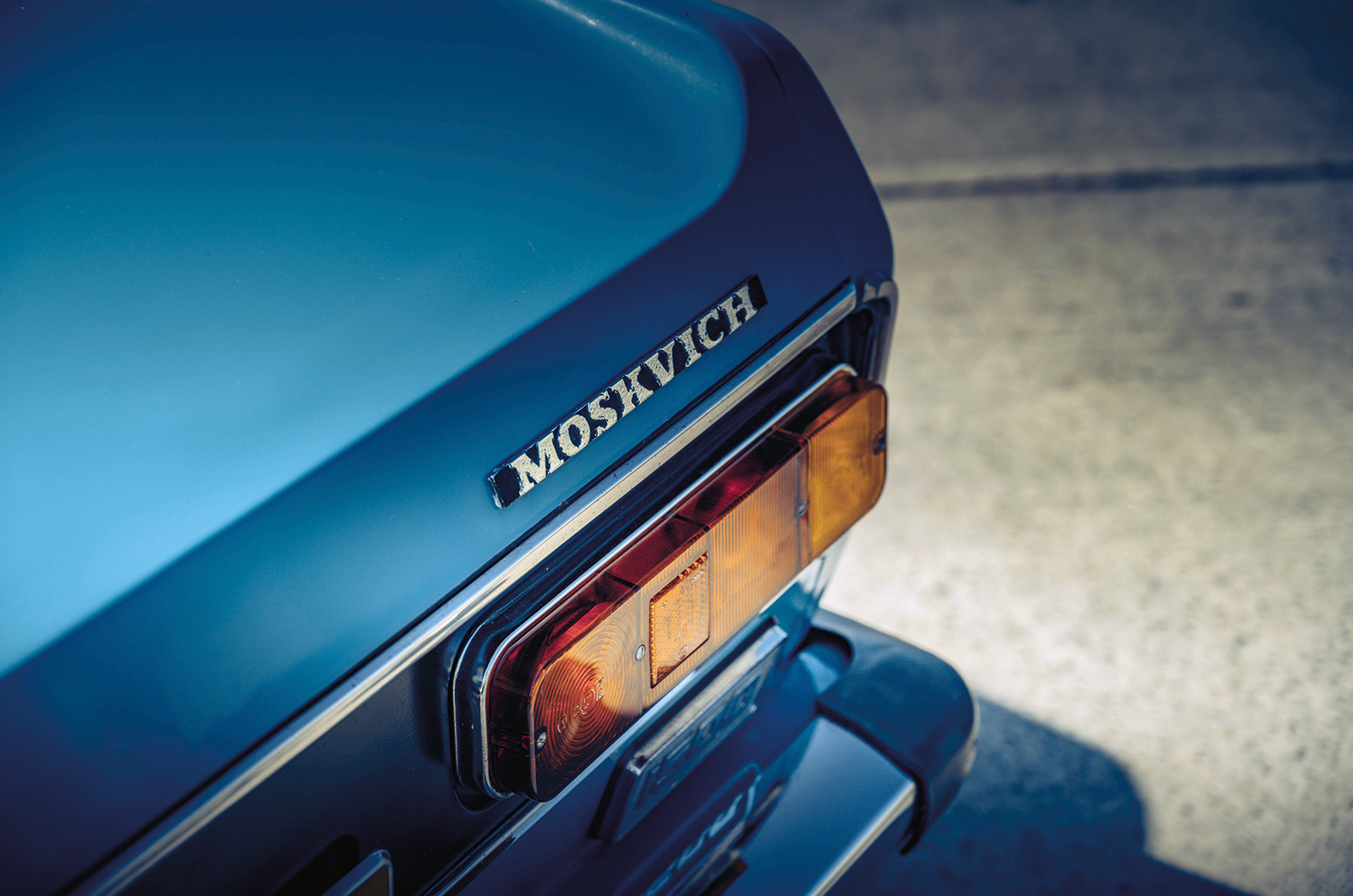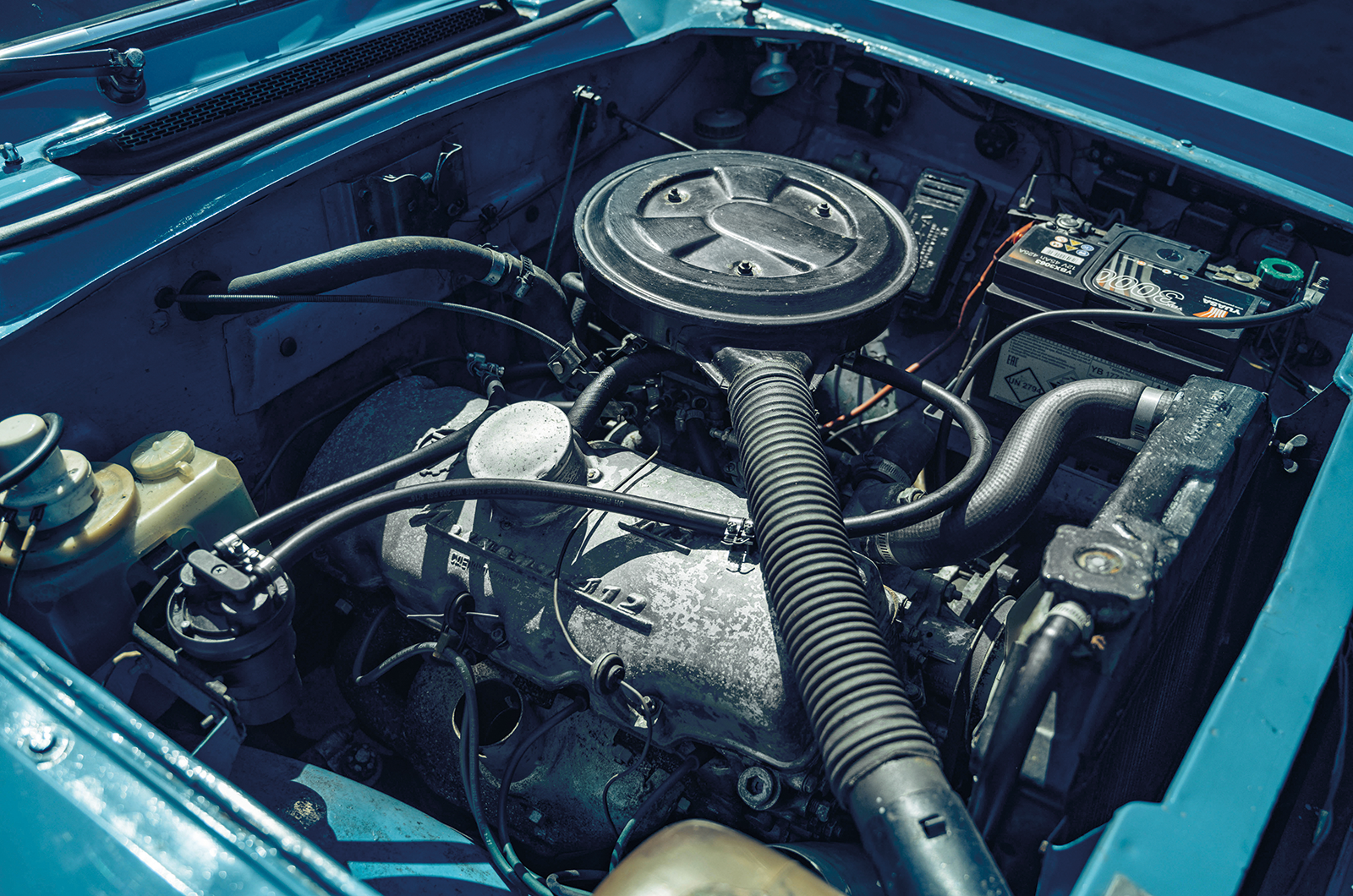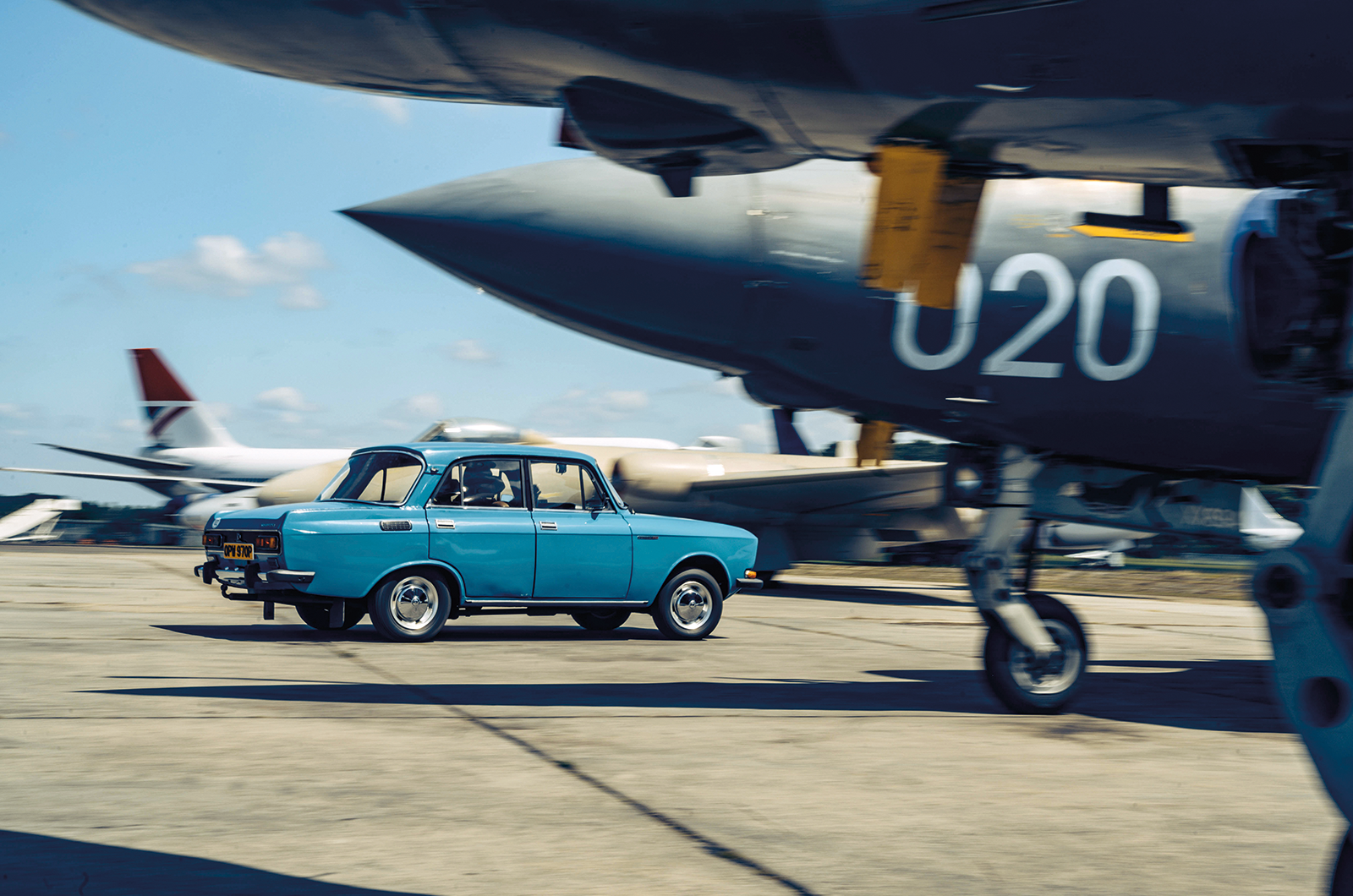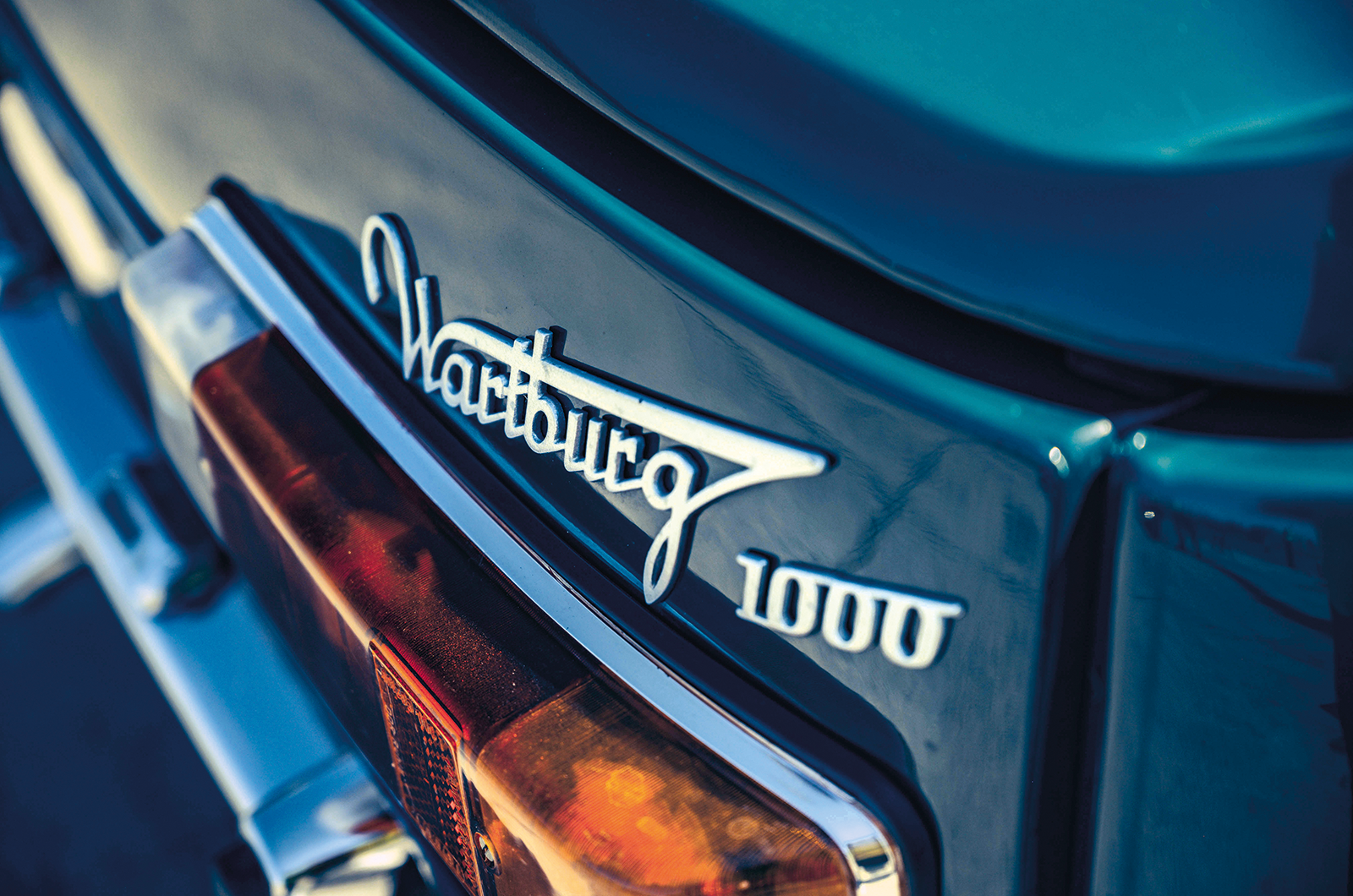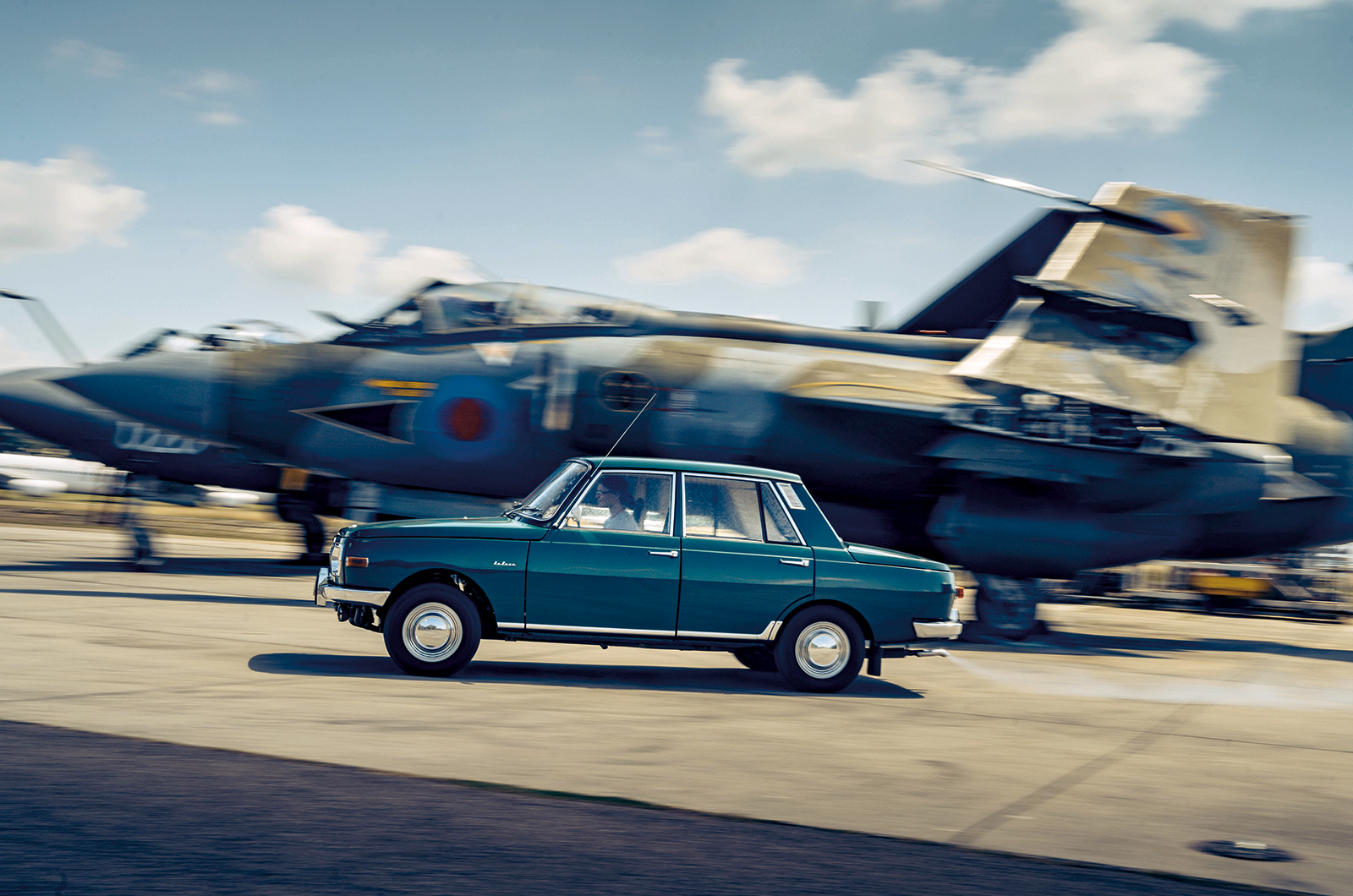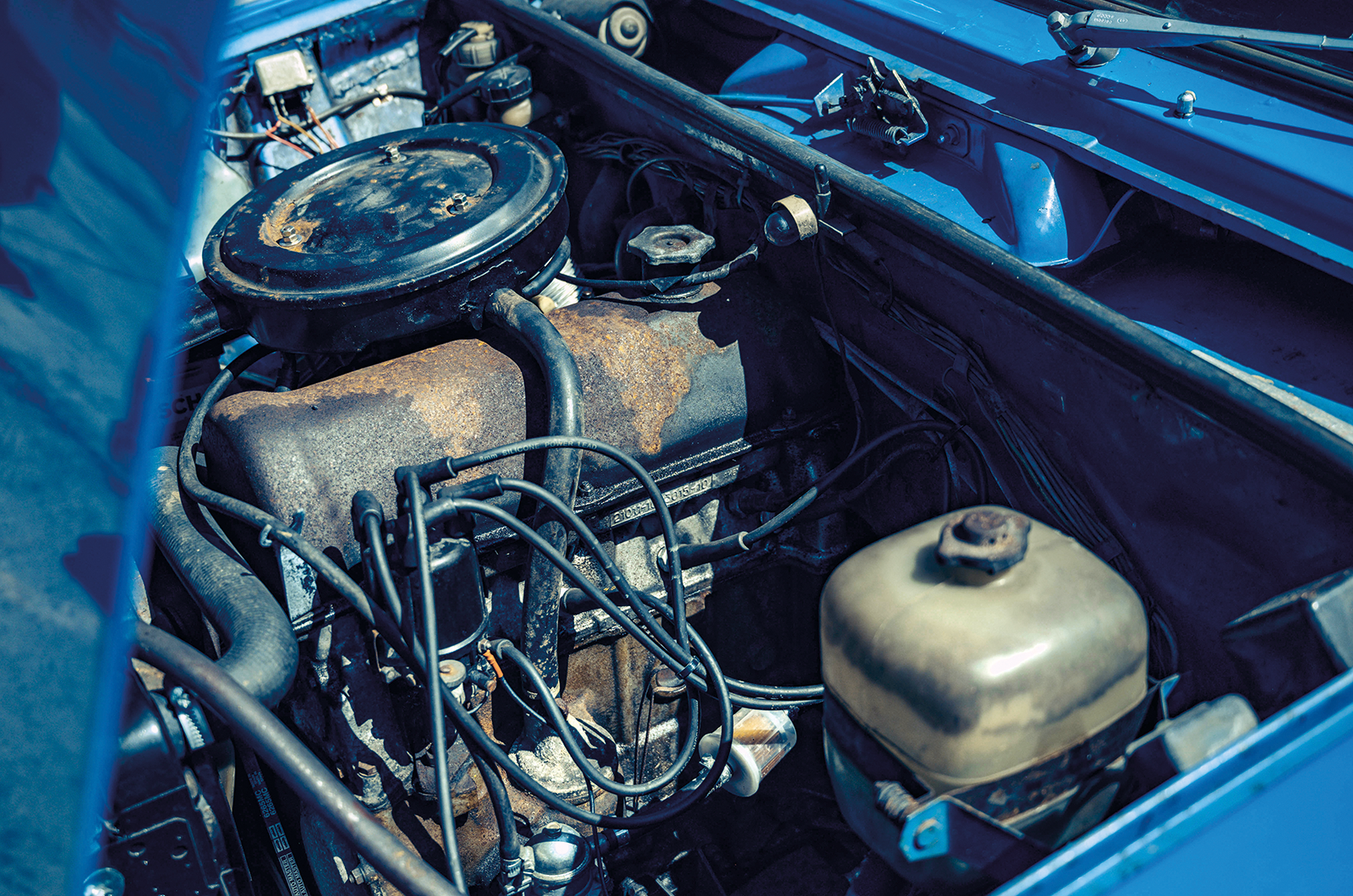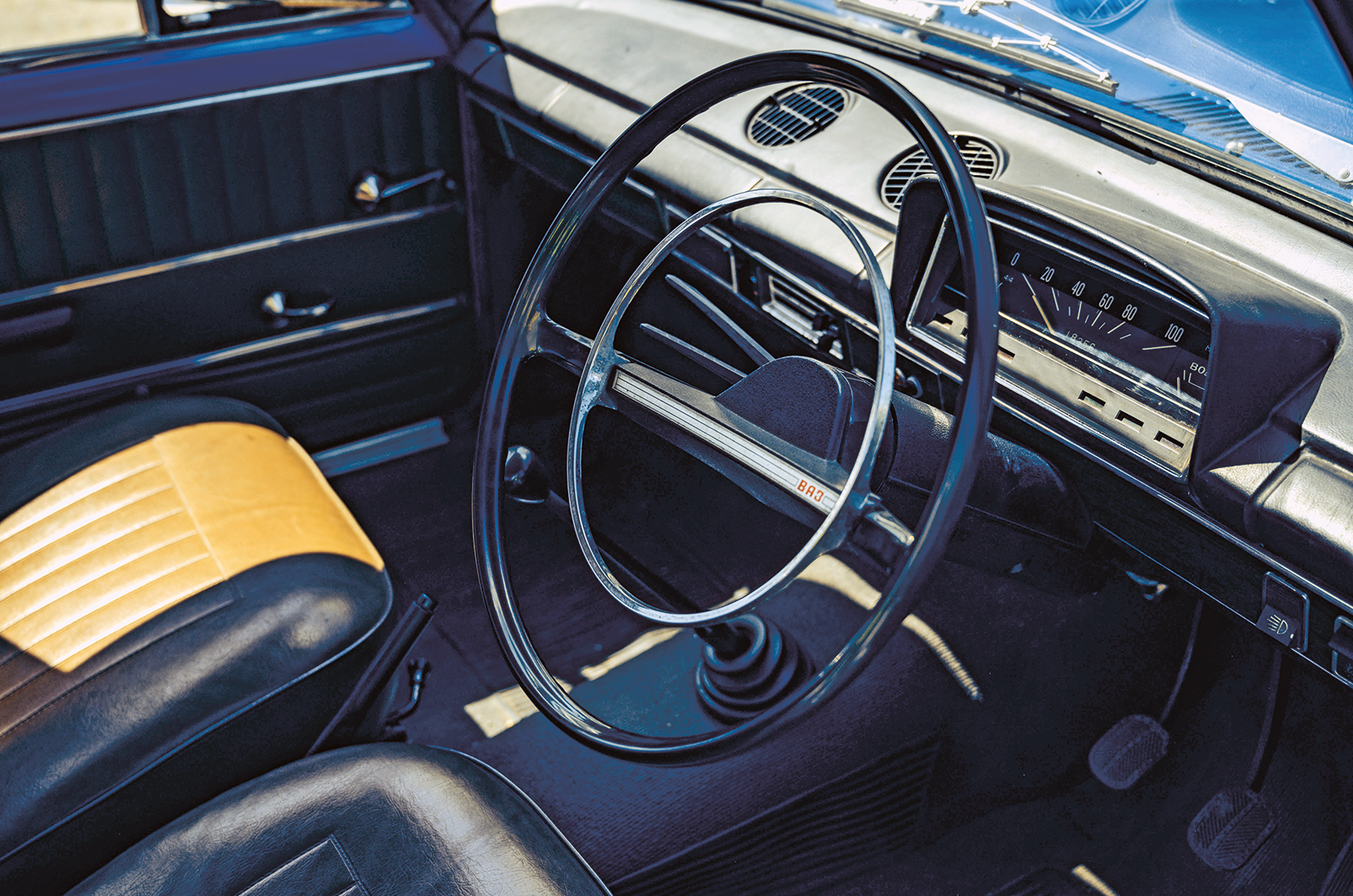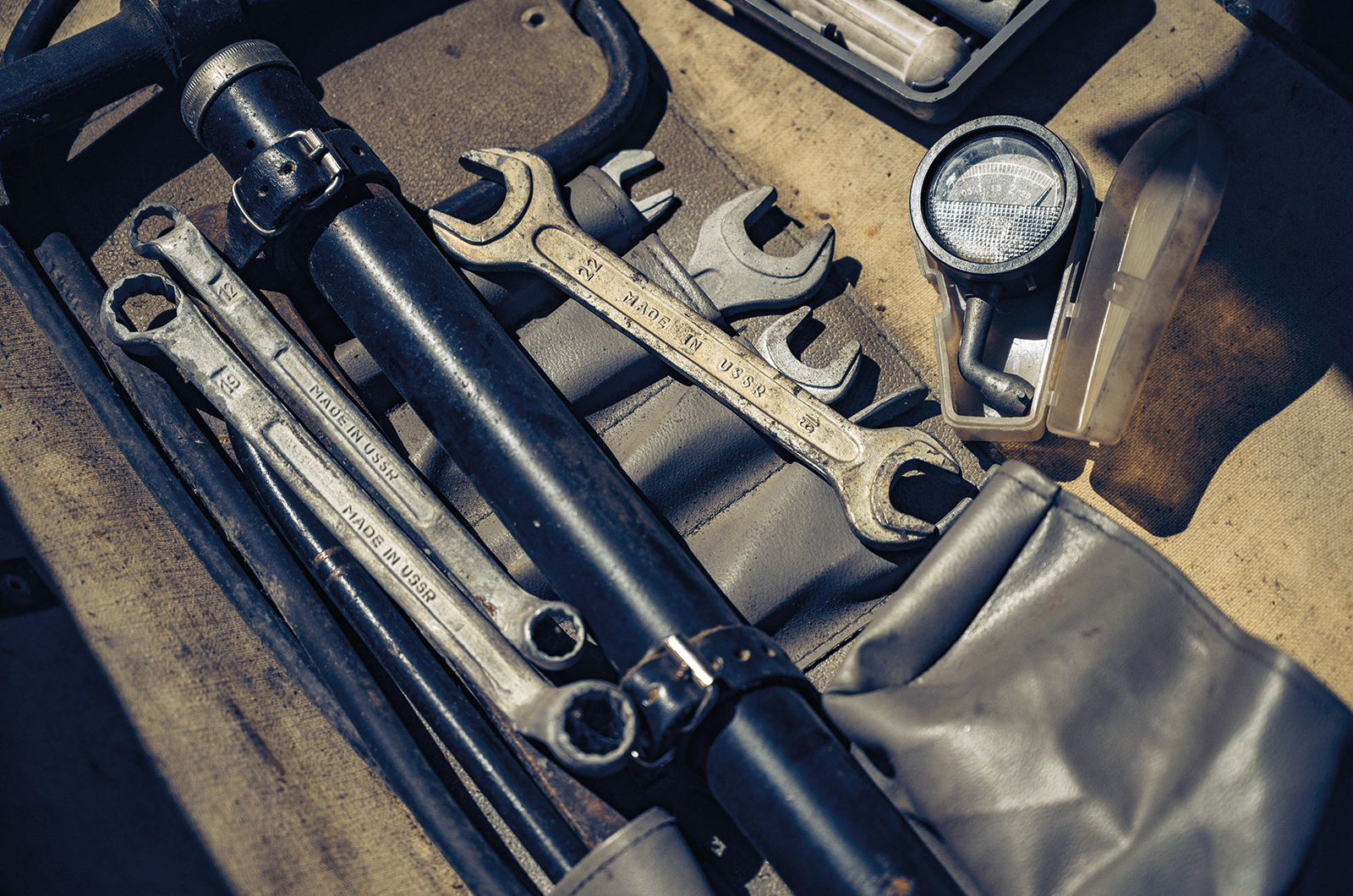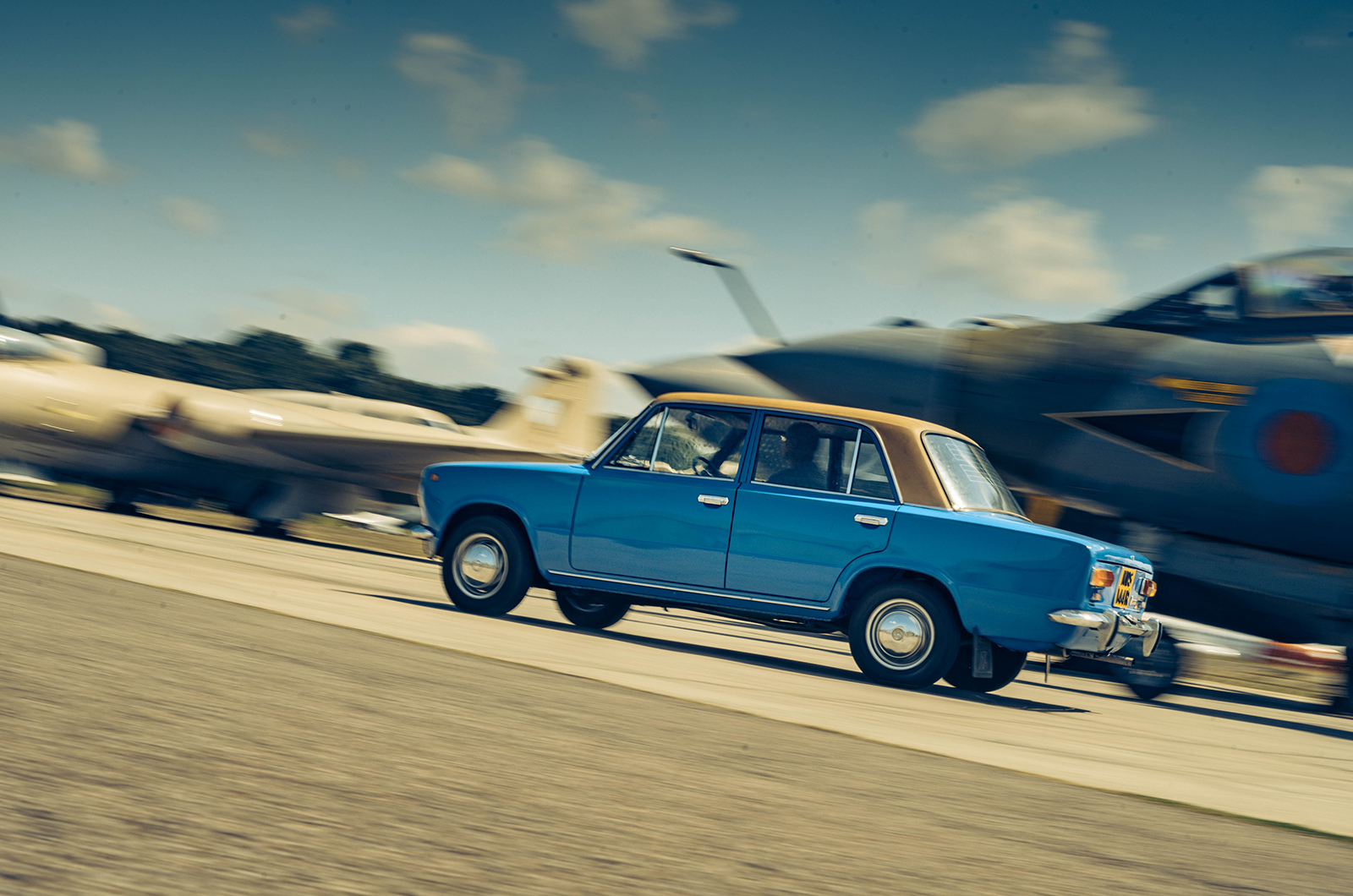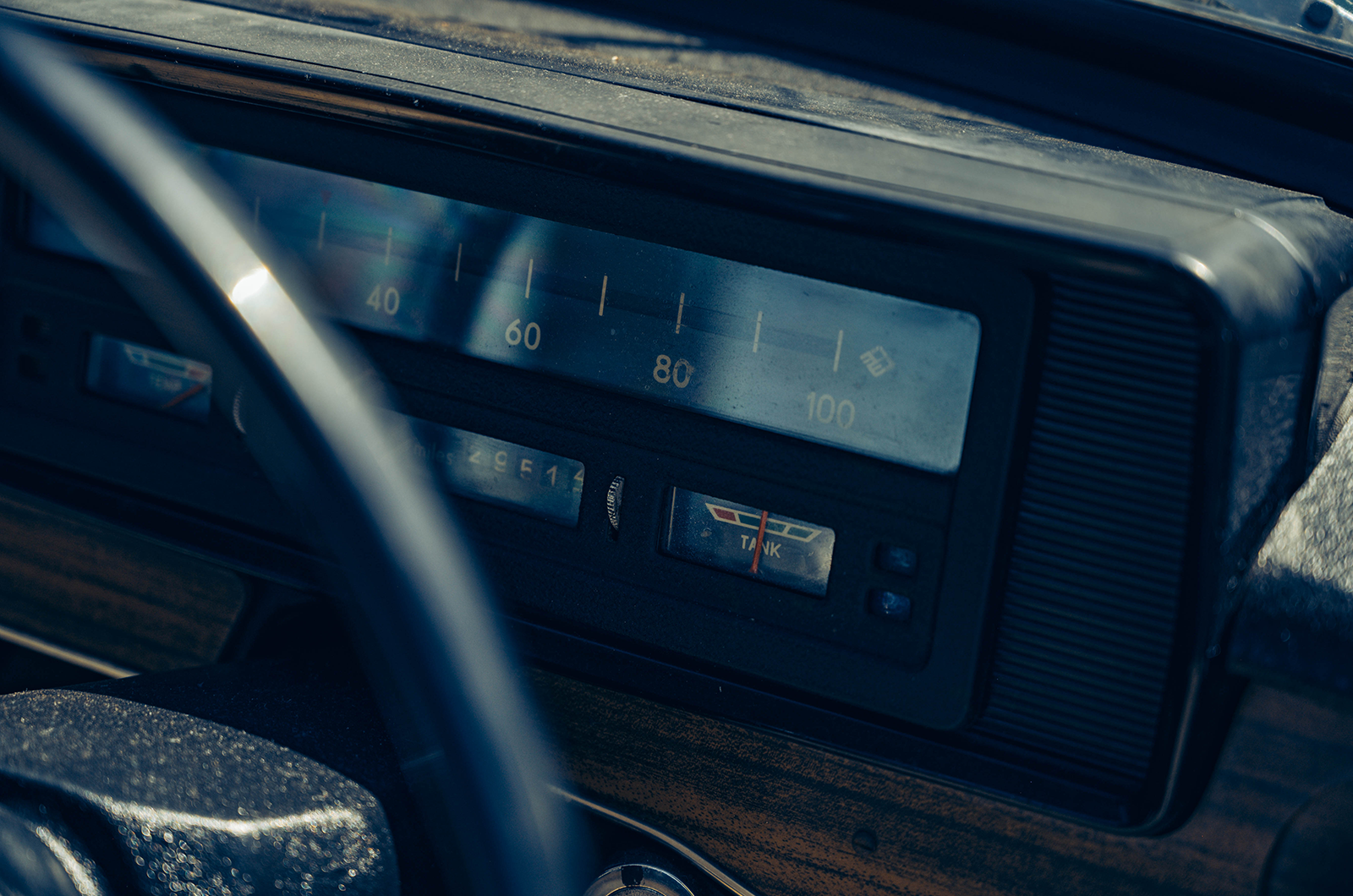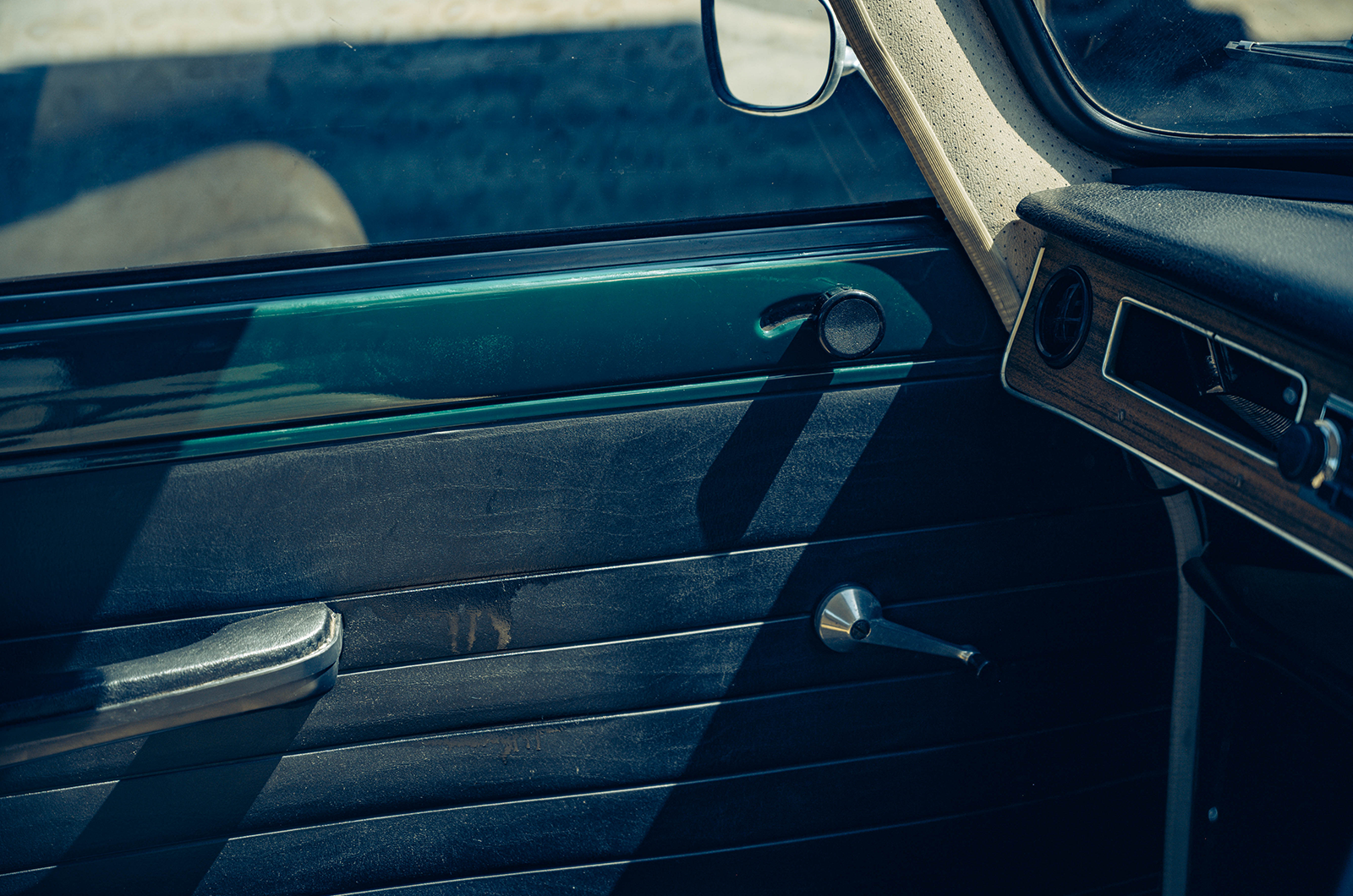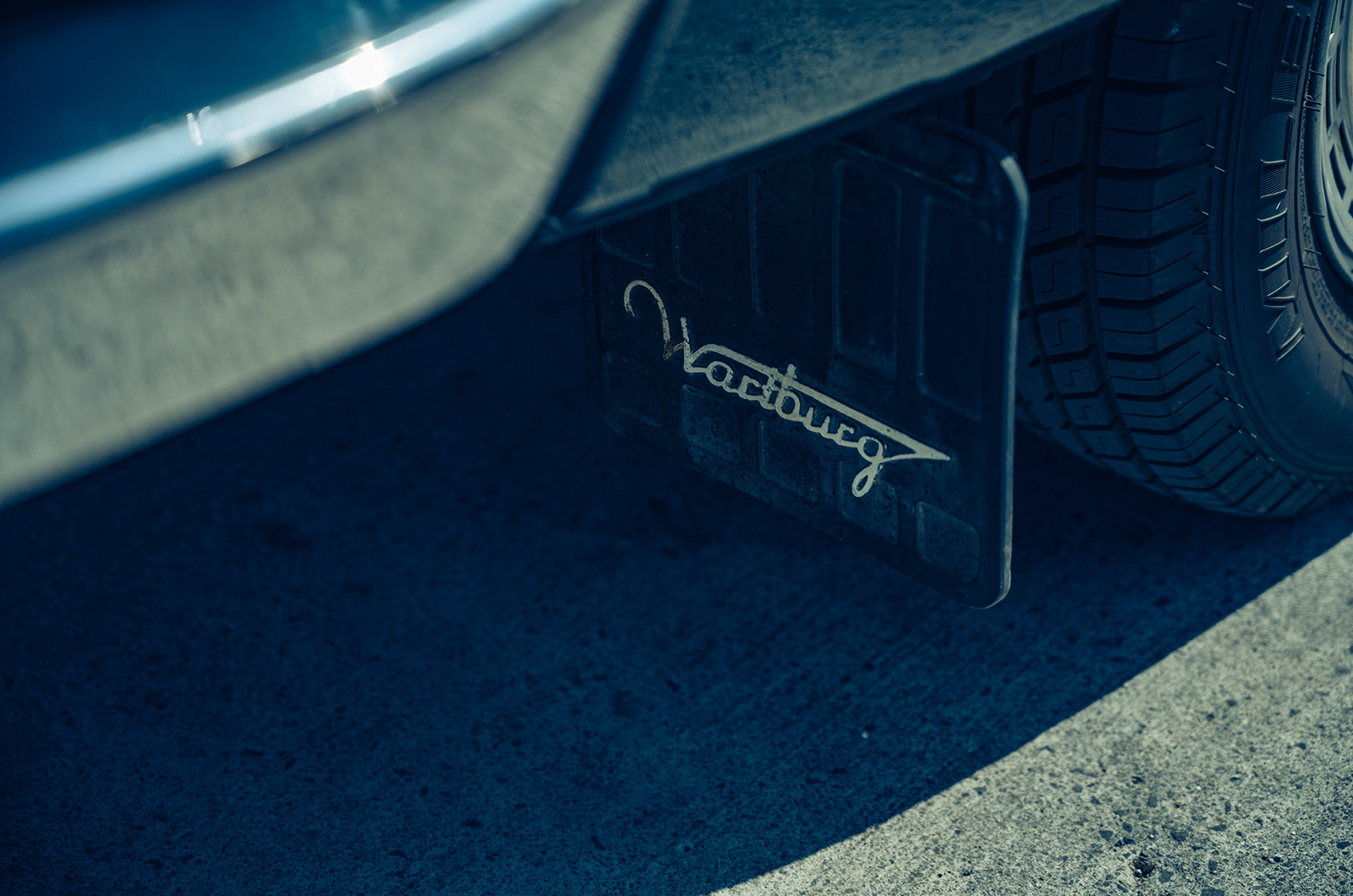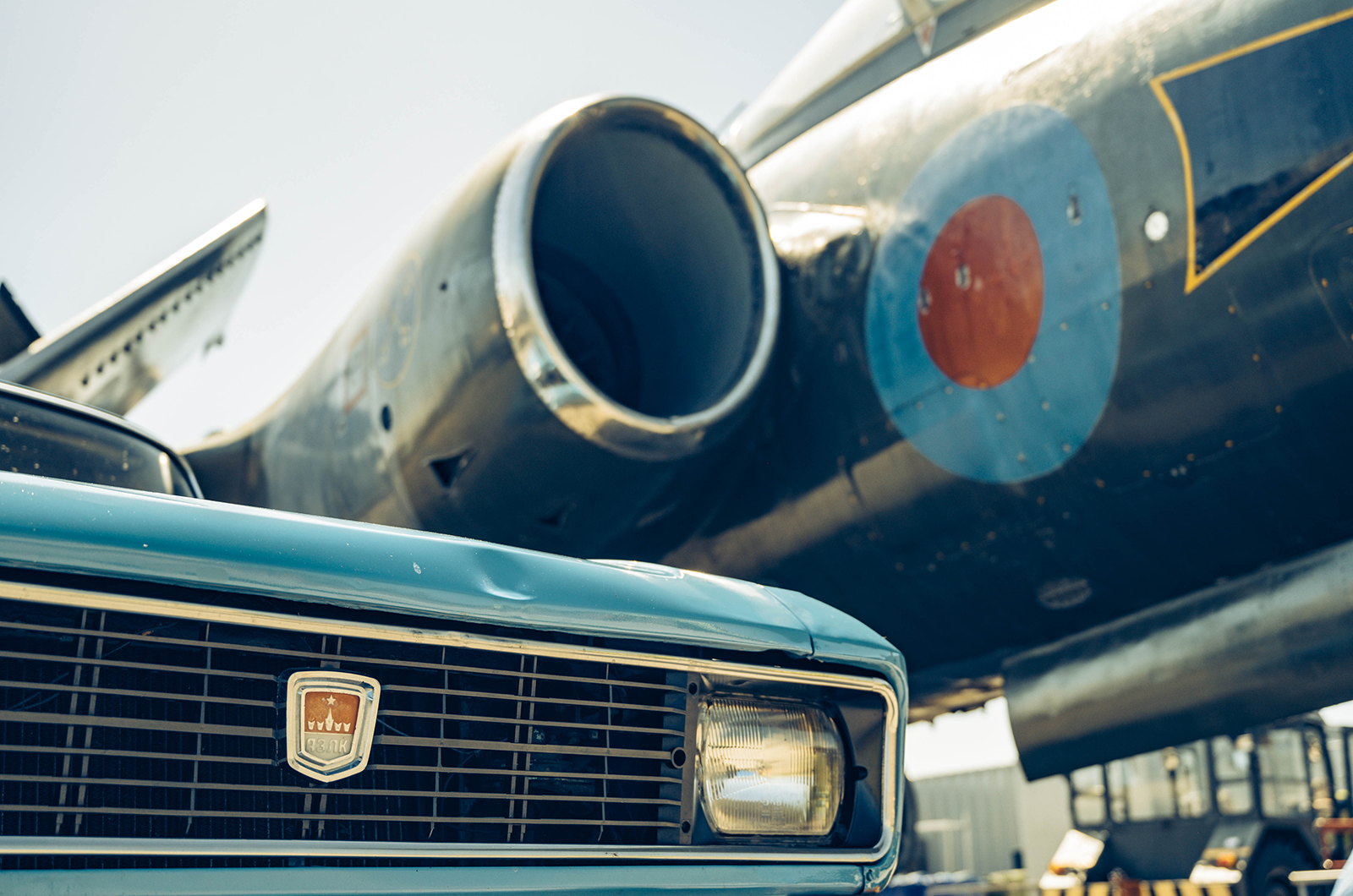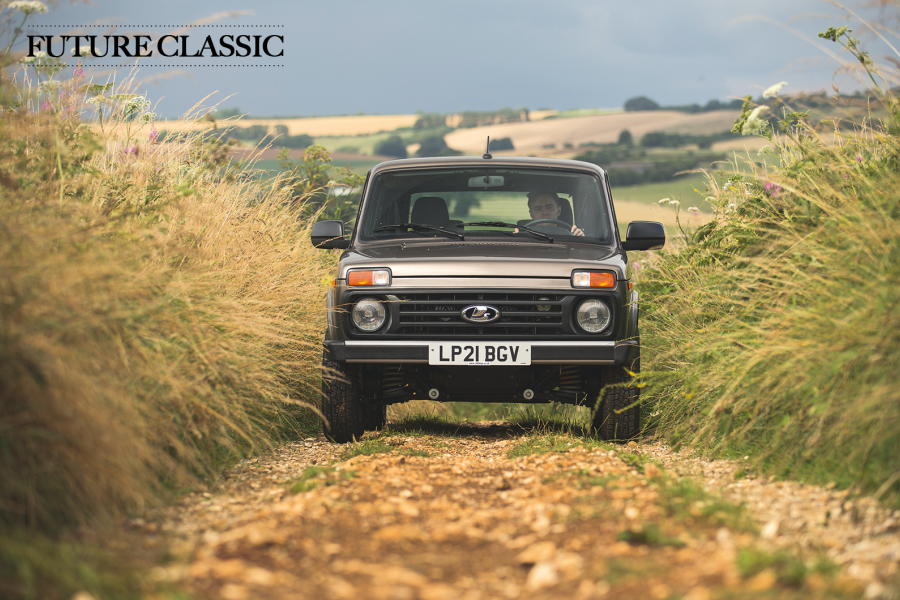Steering is very heavy at lower speeds, with lots of play off-centre when you pick up the pace, which you’re continually compensating for.
The clutch is relatively light, and the reinforced gears in the 124 Sport gearbox engage crisply through the short-throw and accurate gearshift.
With just 62bhp this is no road-burner, but the NAMI unit is torque-rich and slogs away happily up steep inclines.
Braking requires anticipation, since the rather dead-feeling pedal demands a concerted effort to haul the car to a halt.
The Wartburg’s cabin reflects its austere origins, with simple strip speedo and minimal switchgear
Step into the Wartburg after the Lada and, save the large two-spoke steering-wheel rim, square-faced instrument binnacle and the large, generously padded front seats, there’s a marked contrast – especially after you turn the ignition key.
The NVH characteristics generated by the Wartburg’s two-stroke engine are literally disturbing at idle, setting off resonances all through the cabin.
But as soon as you engage first and give the roller-topped accelerator a firm prod, the little triple becomes turbine-smooth, accompanied by a mellow and distinctive ‘baarp’ that’s completely addictive.
Gear selection, however, is not.
Despite its awkward gearbox, the Wartburg Knight is great to drive
Tim Bishop and Michael Ryman’s beautifully restored example is representative of how the car would have driven when new, so it’s a shock to find that the wand-like gear lever manages to be at the same time vague, springy and notchy.
This stemmed from Wartburg having to hurriedly introduce a floor shift specifically for right-hand drive to meet demand, when all other markets retained the slick column change designed for the car.
An improved shift was available from 1969, but it was never the car’s strongest suit.
Gear lever aside, with the engaged freewheel offering clutchless changes, a pillowy ride and taut but low-geared steering, the Knight is a gem to drive – perhaps as much as anything because the experience is so unique.
Driving the Wartburg is made even better by its soft ride
Sarah Swan’s Moskvich is a facelifted ‘2140’ version of the 1500, which was never officially sold in the UK.
Registered in 1978, despite its ‘P’ suffix, the only differences of note were revised head and tail-lights and a new front grille.
Swan’s husband Bill is the 1500’s keeper today, and he explains that when Moskviches came to the UK, dealers were tasked with extensive fettling that would bridge the divide between what Russian buyers would find tolerable, and British buyers would not.
A top-end engine rebuild was not unusual, including lapping-in valves, among numerous reworks.
Engine rebuilds were not uncommon with the Moskvich
The problem was that most dealers ignored Satra’s advice, preferring to let the customer complain before putting the inevitable faults through as warranty claims.
You can only imagine the damage done to Moskvich’s already frail reputation.
You sit high behind the 1500’s small wheel, once again perched on a broad, armchair-like seat.
Chunky, unglamorous fittings abound, but a well-stocked binnacle includes gauges for amps and oil temperature, as well as the regular readouts.
This late Moskvich has the best-equipped dashboard of our trio, and the 1500 feels tough and unburstable on the road
An upright and slightly wraparound windscreen affords excellent vision and, while there’s no hint of audible zest from its engine, when you start to punt the 1500 down some broken Cotswolds roads there’s a sense of indestructability as you motor along, the mushy suspension allowing generous body movement as you row the rather wooden-feeling gear lever through its imprecise gate.
Drive any of these Eastern Bloc relics, even in the context of class standards from 50 years ago, and it’s easy to find fault – and to be unmoved by their lacklustre dynamics and performance.
But this is about fitness for purpose.
Honest, rugged, cheap and (relatively) low-maintenance, they provided a new-car panacea for buyers who would otherwise have been fobbed off with something from a used-car lot.
That they now recall a unique dimension to car ownership in the 1970s is very much a blessing.
Images: Olgun Kordal
Thanks to Cotswold Airport; Mel Holley; Kay Bennett
Factfiles
Moskvich 1500
- Sold/number built 1969-’76 (UK)/ 500,000+ (total)
- Construction steel monocoque
- Engine all-alloy, ohc 1478cc ‘four’, with Russian-made carburettor
- Max power 80bhp @ 5800rpm
- Max torque 85lb ft @ 3-3400rpm
- Transmission four-speed manual, RWD
- Suspension at front independent, by wishbones, coil springs, anti-roll bar rear live axle, semi-elliptic springs; telescopic dampers f/r
- Steering worm and roller
- Brakes drums
- Length 13ft 8½in (4178mm)
- Width 5ft 1¼in (1556mm)
- Height 4ft 10½in (1486mm)
- Wheelbase 7ft11in (2108mm)
- Weight 2665lb (1209kg)
- 0-60mph 15.3 secs
- Top speed 92mph
- Mpg 26
- Price new £717 (1973)
- Price now £1500-6000*
Wartburg Knight
- Sold/number built 1967-’76 (UK)/1,225,190 (total)
- Construction unitary body with perimeter-frame chassis
- Engine iron-block, alloy-head, two-stroke 991cc triple, with BVF 36F carburettor
- Max power 45bhp @ 4200rpm
- Max torque 67lb ft @ 2200rpm
- Transmission four-speed manual, FWD
- Suspension independent, at front by double wishbones rear semi-trailing arms, anti-roll bar; coil springs, telescopic dampers f/r
- Steering rack and pinion
- Brakes drums
- Length 13ft 11in (4241mm)
- Width 5ft 4½in (1638mm)
- Height 4ft 10¾in (1494mm)
- Wheelbase 8ft ½in (2448mm)
- Weight 2315lb (1050kg)
- 0-60mph 25.1 secs
- Top speed 71mph
- Mpg 28
- Price new £760 (1973)
- Price now £1500-5000*
Lada 1200
- Sold/number built 1974-’83 (UK)/ 2,710,930 (total)
- Construction steel monocoque
- Engine iron-block, alloy-head, ohc 1198cc ‘four’, with Russian-made twin-choke carburettor
- Max power 62bhp @ 5000rpm
- Max torque 66lb ft @ 3400rpm
- Transmission four-speed manual, RWD
- Suspension at front independent, by double wishbones rear live axle; coil springs, telescopic dampers f/r
- Steering worm and roller
- Brakes discs front, drums rear
- Length 13ft 3½in (4073mm)
- Width 5ft 3in (1611mm)
- Height 4ft 7¼in (1440mm)
- Wheelbase 7ft 9½in (2424mm)
- Weight 2105lb (955kg)
- 0-60mph 20 secs
- Top speed 88mph
- Mpg 30
- Price new £999 (1974)
- Price now £1500-5000*
*Prices correct at date of original publication
READ MORE
Moscow calling: inside Russia’s biggest classic car show
Second time lucky: Fiat 124 Abarth restoration
Budget sporting saloons: Triumph Vitesse vs Vauxhall Viva GT
Simon Hucknall
Simon Hucknall is a senior contributor to Classic & Sports Car
